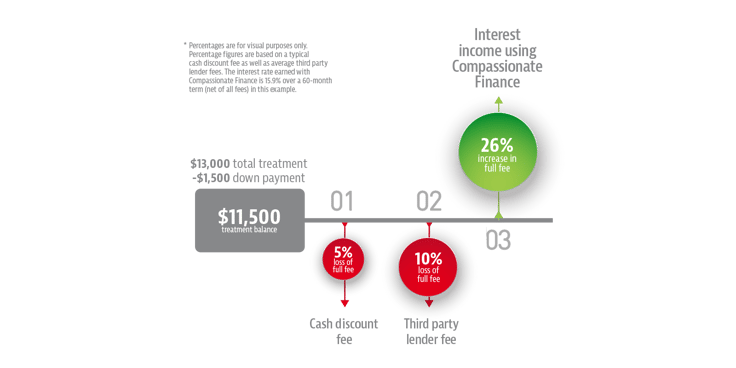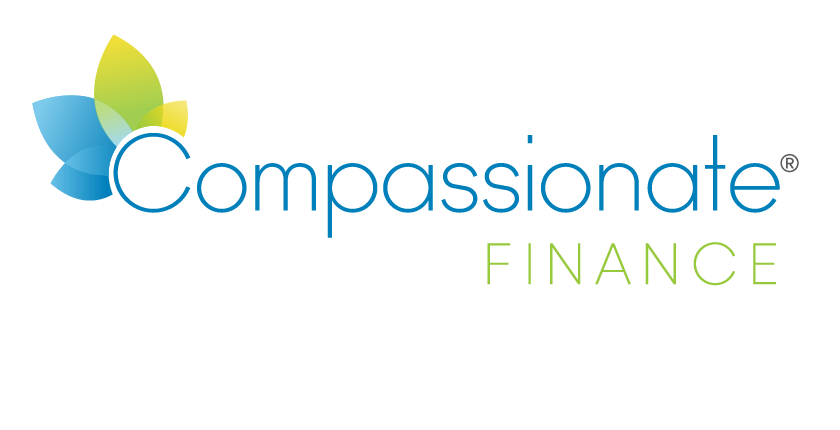How I grew my practice with Compassionate Finance
August 19, 2021

I began my career in dentistry with a world of expectations, but admittedly, I had limited experience on how to best deal with the pressures of growing a practice. I quickly became frustrated with the everyday conundrum of my patients choosing partial treatment options against my recommendations. In their minds, the cheaper option was the best option, regardless of the negative effects on their long-term health.
Each day I increasingly operated to accommodate their pocketbooks, unknowingly propagating the commoditization of dentistry. As a young practitioner, I had a choice: Either discount the product, or stand my ground and not cheapen the experience I thought I was delivering. Ultimately, neither of the options sat well with me.
Making a Compassionate Switch
Establishing financial arrangements with a patient is less a process and more an emotional experience. Having the financial means to pay for the recommended treatment is just as important as scheduling the time to get the treatment done or having the mental strength to show up for the appointment.
Essentially, it’s our job as the captains of this process to create a way to fit dentistry into our patients’ lives while providing the best treatment possible.
I began offering Compassionate Finance in 2011, and this became the tool that made it easier for my patients to fit dentistry into their lives. As the owner of a group practice in North Carolina, I aggressively piloted a Compassionate Finance program to the tune of $1.2 million in total treatment values in less than a year. My business partner and I quickly increased our production as well as our revenue. It was then that I realized something had changed—my patients were saying yes to my recommended treatment options, and I was having much more fun practicing dentistry.
Compassionate Finance allows you to approve any patient for any amount of treatment. A banking and credit analysis is run in order to determine the interest rate. Since I earn the interest on the loans, my profits quickly increased.
Tweaking a Flexible Platform to Meet Practice Needs
As this payment option evolved, so did my practices. In 2012, I decided to offer Compassionate Finance as a first-choice payment option in my office. I approved most patients and simply required a down payment from each patient to cover my hard costs. Down payments were typically covered by cash, insurance, or a combination of these, and they were paid directly to me the day of treatment.
Using this system, not only was I finally able to feel good about my patients choosing the option that was best for their overall health, but I was benefiting my business and doing more work than ever before.
Early in my career, many of the consultations and treatment plan presentations ended with an upset patient. The cost of dentistry is not cheap, as we know, and overcoming price was a daily struggle for me and my patients. Having an option that allowed me to provide comprehensive dentistry at monthly payments my patients could afford increased overall satisfaction in my office.
Affordable Care Changed a Life
A patient — let’s call her Mary for the sake of story — first came into my office a few years ago. She had always had problems with her teeth, even at a young age. She would get a little bit of work done each year, but she couldn’t afford what insurance did not cover. She was following the advice and financial options that dentistry usually offers, but as the years passed, her mouth continued to deteriorate and the cost of treatment became more expensive.
At the age of 32, she had more than $13,000 worth of dentistry that needed to be done. We had the option of doing what most practices do every year, which is a bit at a time, or we could use her $1,500 of insurance as a down payment and finance the remainder. We financed $11,500 over 60 months, which allowed Mary to make monthly payments she could afford. She was able to get her mouth restored to optimal health in a couple of appointments.
For Mary’s case, we produced an additional $13,000 in treatment (plus additional income from interest) that we wouldn’t have otherwise done without a switch to Compassionate Finance.

A Complete Transformation of My Practice
Offering Compassionate Finance to each patient allowed my partner and me to grow our business by 40 percent. Currently, our newly-founded group, CarolinasDentist.com, is doing an average of $300,000 in treatment per office, totaling over $1.1 million in production each month across four locations.
Many of my colleagues have asked what happens if patients stop paying. That seems to be the biggest question for many practitioners, and I was worried about that as well. I can honestly say that the team at Compassionate Finance works harder than any office member at ensuring that payments are made.
I am able to track all late payments and oversee the ongoing collection efforts. My four practices are collecting at an outstanding rate of more than 95 percent. From a collections standpoint, I am collecting more than I would if all of my patients were approved through a traditional third-party lender, and that takes into account all fees and missed payments.
I have come to realize that having the ability to finance a patient’s treatment is less about me getting to do the work and more about my patients finally getting what they deserve.
We will never eliminate all obstacles or be able to wave a magic wand of “case acceptance,” but as a general dentist, you must offer the best financial options available in order to overcome one of the largest obstacles our patients face. Patients’ readiness stems from feeling comfortable with the overall treatment experience. Their experiences start from the moment they walk through the door to the moment they walk out. I am pleased to say that we have more patients walk out satisfied with their chosen financial arrangements than ever before.
Compassionate Finance has created secured monthly income for my practice and removed one more barrier to achieving my ultimate goal: creating a legacy of disruptive innovation while also changing the way our profession is perceived.







